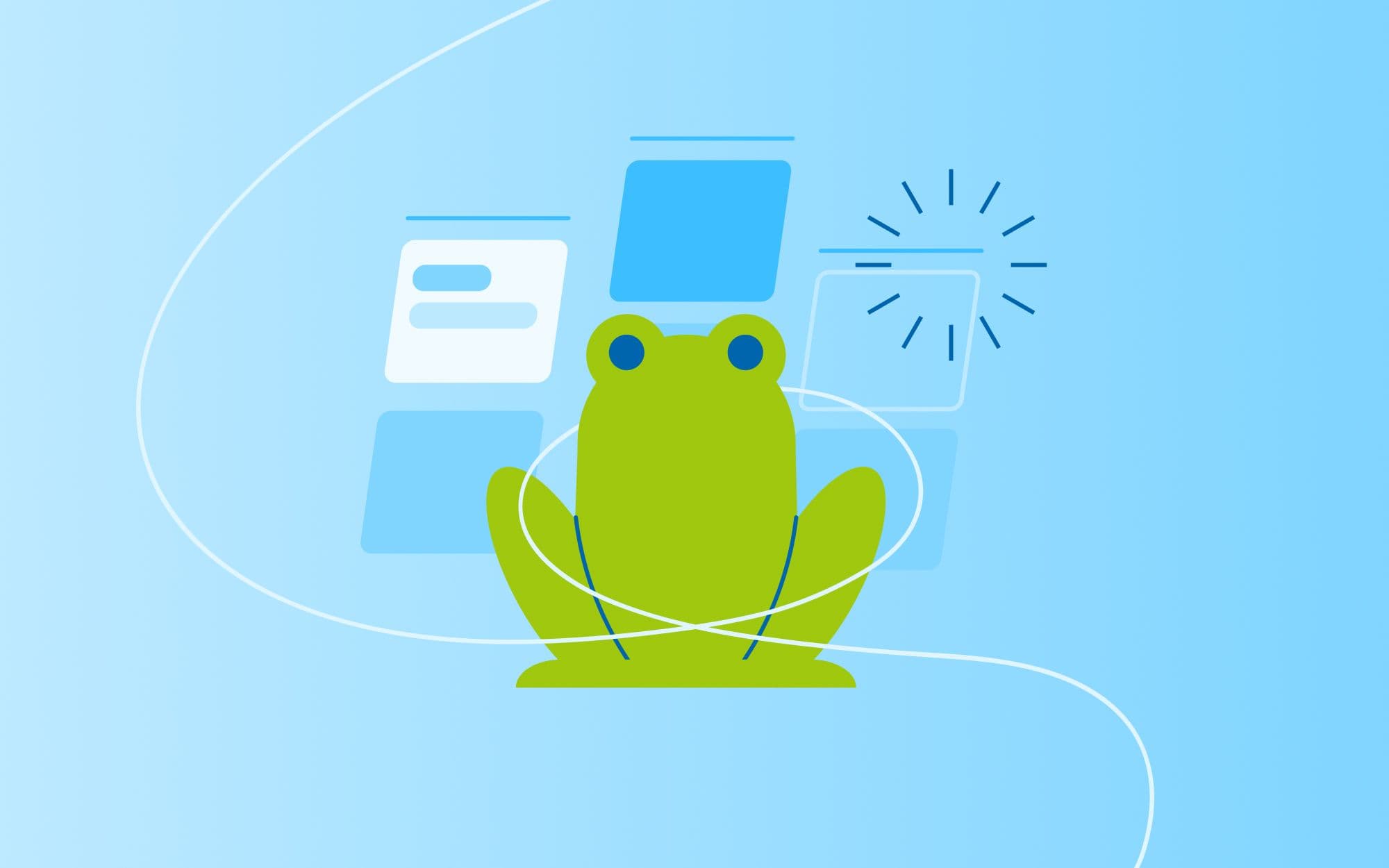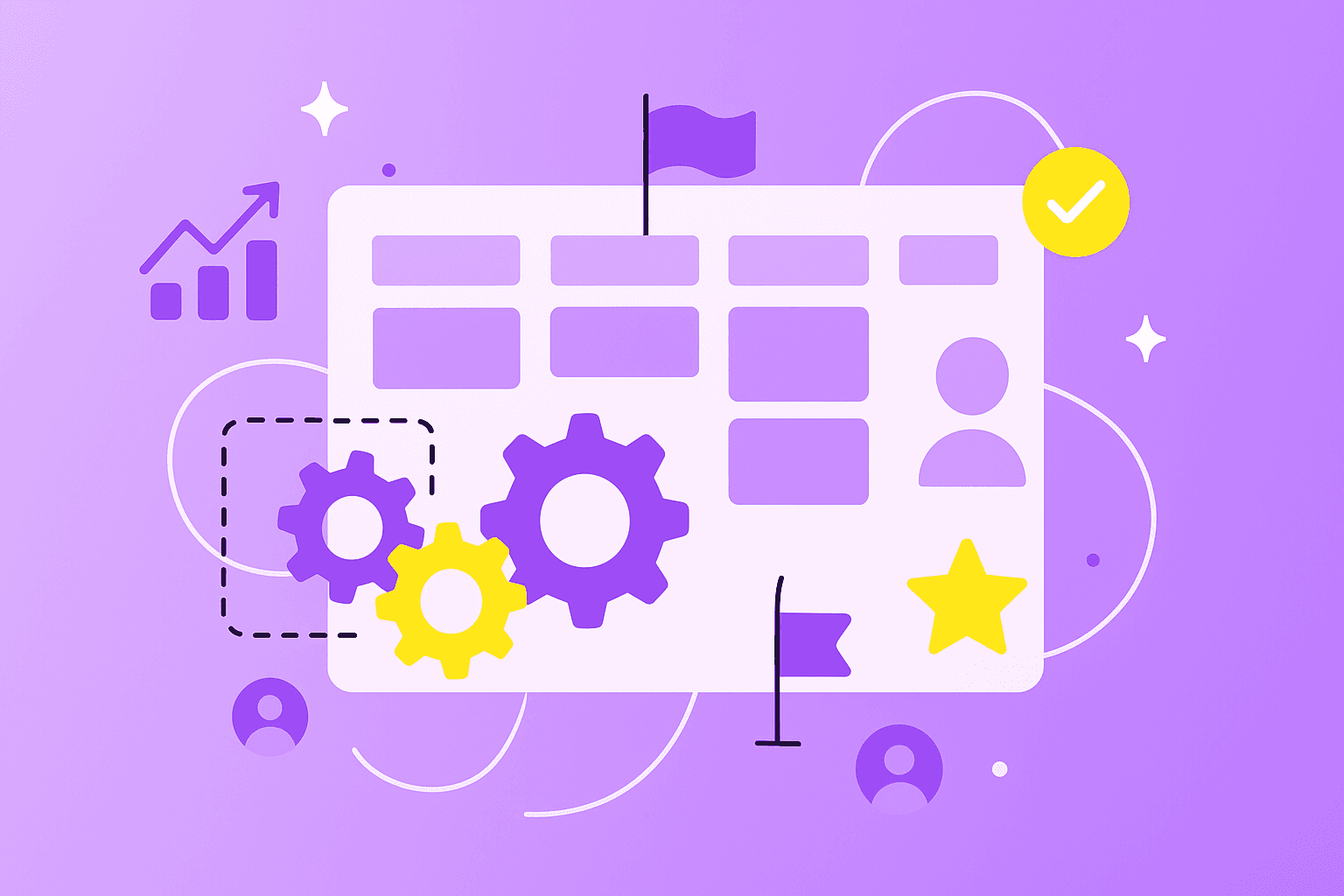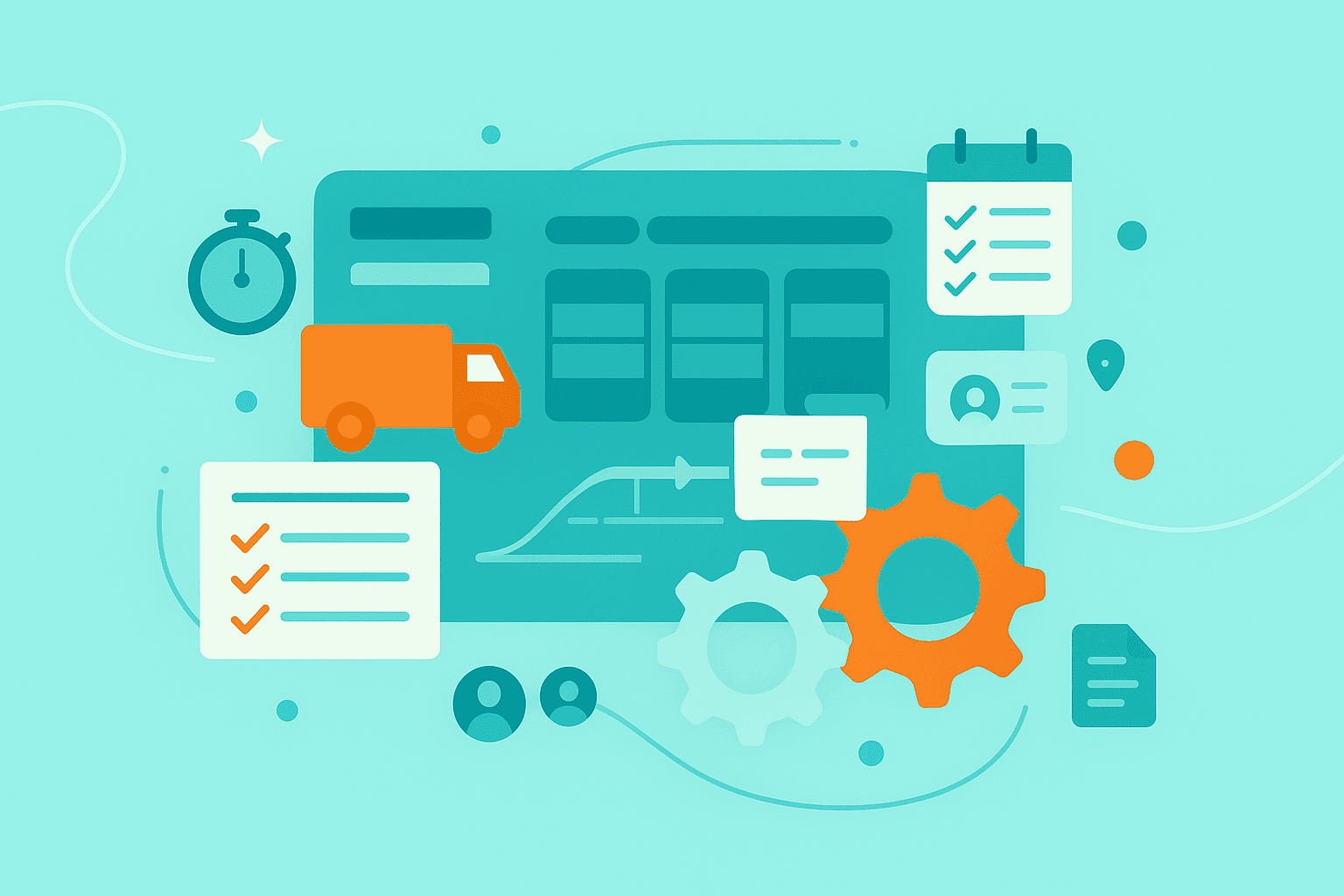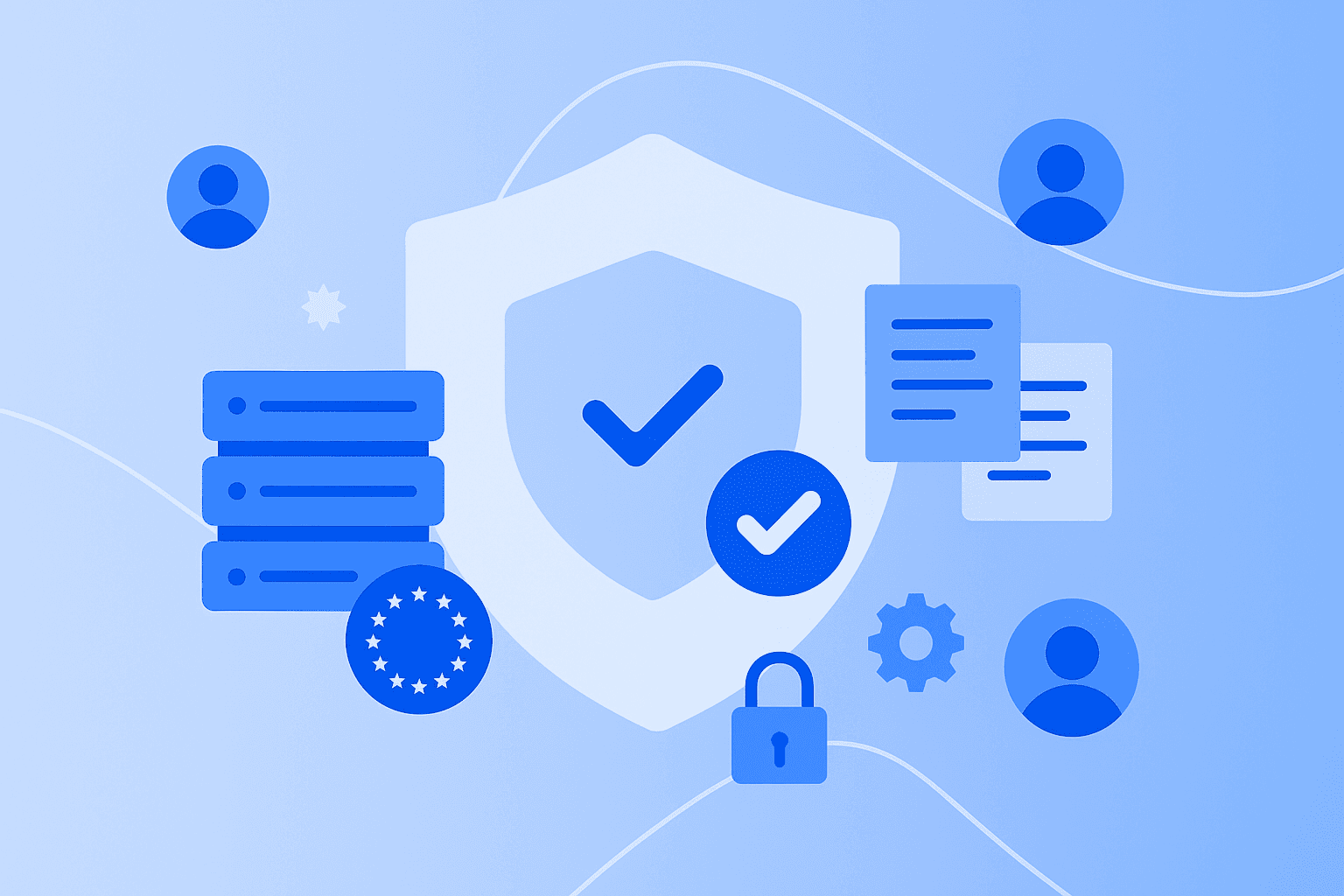What does Eat the Frog mean?
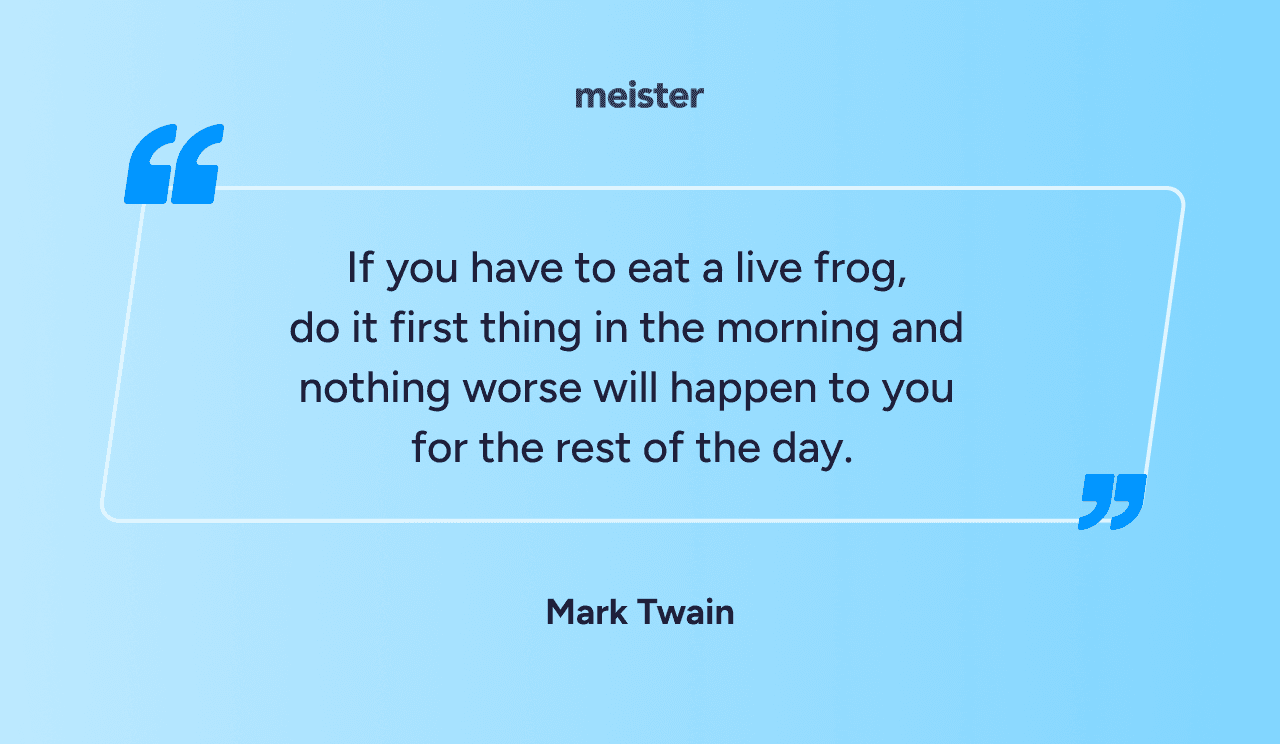
Depending on who you ask, Eat the Frog could be the cure for procrastination or another self-help fad that wilts in the cold light of your workday. Either way, it’s a popular productivity technique that comes from an age-old principle: get the hard things done first. The general idea is that if you tackle the most challenging task in the morning while your energy is high, unproductive time caused by anxiety and procrastination will be reduced. Better still, with the most daunting task done early, the rest of the day will feel much more relaxed by comparison.
Although it sounds simple (and it’s something that people have been doing for centuries by different names), the Eat the Frog technique has seen a revival in recent years, popularized by Brian Tracy in his book “Eat That Frog!: 21 Great Ways to Stop Procrastinating and Get More Done in Less Time.” Owing largely to the success of the book, more people than ever are using the Eat the Frog technique in their personal and professional lives.
So why are our amphibian friends back in vogue? The reason for that is simple: our online world makes it easier to procrastinate than ever before – and the modern office worker needs to take concrete steps to overcome the blockers.
The procrastination problem.
According to the consultancy experts at Solving Procrastination, Workplace procrastination is a phenomenon where people unnecessarily postpone dealing with work-related tasks.
Although it’s often attributed to a lack of drive or willingness to work, there are many factors that cause people to procrastinate. Some of these are to do with the task itself – for example if it is too large or overwhelming, or if the exact goals are unclear – while psychological factors such as anxiety or a fear of failure can also have an effect. External elements, such as notification-heavy apps or social media addiction add to the issue.
If you find yourself procrastinating, the good news is that you’re not alone: studies that indicate 20% of adults procrastinate chronically. The bad news is that your mental wellbeing is at risk. Research has indicated that procrastination is an integral part of the human condition.
So, procrastination makes us less productive, less happy, and even poorer too. As good a motivation as any to find a strategy to overcome overthinking and get more done.
Why should you Eat the Frog first?
There’s no doubt that many people benefit from Eat the Frog. Advocates for the technique appreciate the added focus on their work priorities and the stress-relieving effects of getting the most intimidating tasks out of the way as quickly as possible. If you try the method for yourself, you’ll probably notice one or more of the following:
More priority focus. By tackling your most important or challenging task first, you ensure that you’re dedicating your peak energy and attention to tasks that make a difference to your team.
Less procrastination. By starting the day with your “frog”, you simply don’t give yourself time to procrastinate. Better yet, completing a significant task early in the day can create a positive momentum that carries over to other tasks.
Less stress. Procrastination causes stress and anxiety… which accumulates the longer you put something off. Completing the work that you’d otherwise be trying to avoid stops this from happening.
More time. Without the time that you’d otherwise have spent procrastinating and avoiding work, who knows what else you could achieve?
How to identify frogs
The Eat the Frog technique helps you work through complex or challenging tasks early. By prioritizing these complex tasks, you can power through them and have plenty of time available for less complex tasks.
So what is an example of a complex task? What can be classified as a “frog?”
Let's say you've been tasked with putting together a work order for new equipment at a factory. Within that large task are a series of subtasks that must be completed before you complete the task.
The frog is the task that's creating a mental block in your mind. Identify the most complex task or subtask in your project. This is likely overwhelming you and making it difficult to see a path forward to complete the project.
Concentrate your energy on completing that one. Put the rest of the project out of your mind and concentrate on that one task. By focusing your attention, you can chip away at the larger project, one step at a time.
Eat the Frog and feel a rush of motivation. Once you've overcome the complex task, you'll feel so inspired and motivated by your accomplishment.
Get into a groove. Now that the hardest task is over, ride that wave of momentum and tick off the next task on your list. Before you know it, you've placed the order, arranged the delivery and you're ready to complete the installation.
In this example, or any other, try to work through the tasks that seem the most challenging first. By getting those tasks done, you'll feel empowered to plow through the remaining tasks and complete the project.
How can I use the Eat the Frog technique at work?
For improving your personal productivity, Eat the Frog is a simple method to start with. Here’s what you need to do:
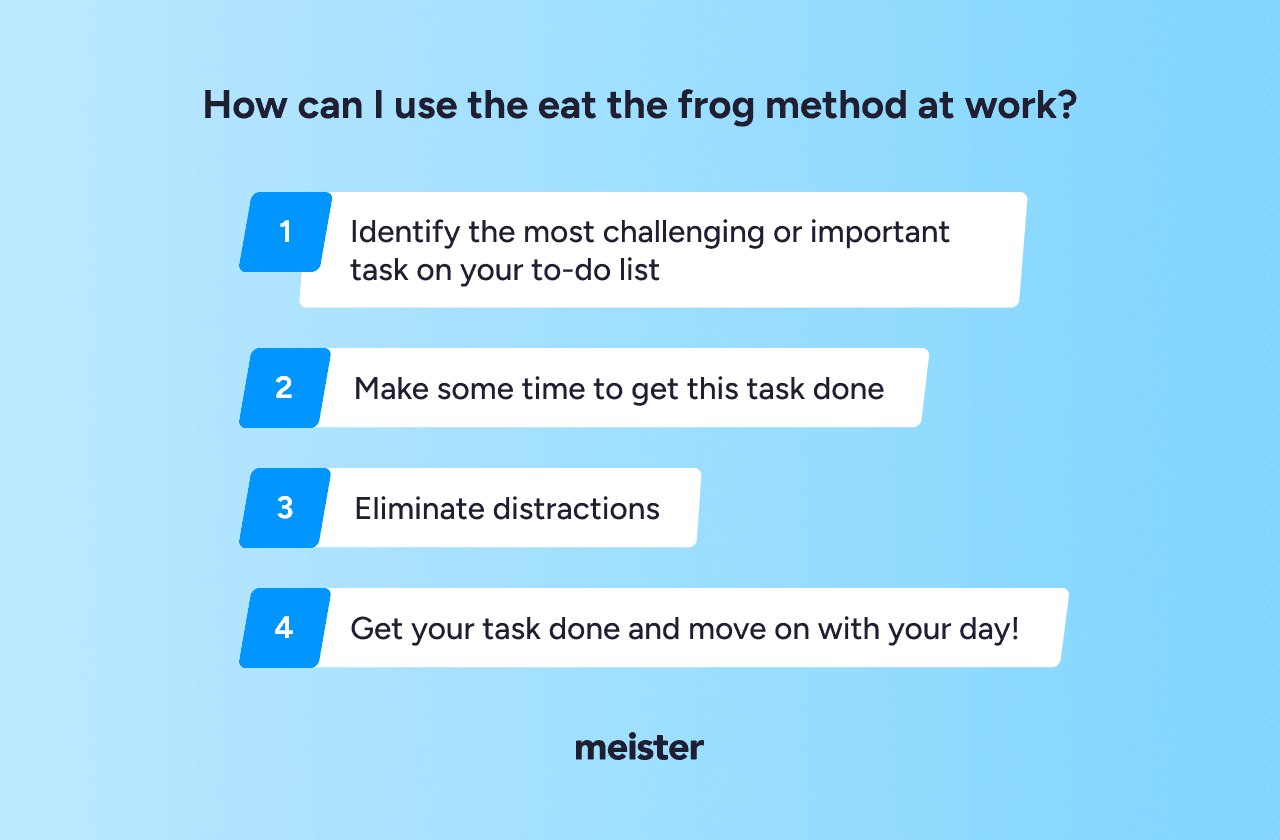
Identify the most challenging or important task on your to-do list. This is your frog.
Make some time to get this task done. A true frog-eater would do this first thing in the morning, but you can add a little flexibility if you need to.
Eliminate distractions. If you’re always looking at your phone… turn off your phone. If notifications break your focus… switch them off. From this point until completion, all that matters is your frog.
Get your task done and move on with your day!
If you’re a manager looking for a way to boost your team’s productivity, elements of the Eat the Frog technique can be used in your projects or daily work. Here are a few things you can do to help.
Help your team prioritize. If you use a task management tool, tags and deadlines can help you to indicate which tasks are low-priority and which need addressing right away.
Reduce distractions for your team. Introduce focus times or meeting free days that enable your team to apply their efforts effectively.
Talk about it. If someone on your team is continually rushed or mentions struggling with procrastination, talk about ways to improve their personal productivity in a safe, judgment-free environment.
This article contains excellent advice for project managers about managing procrastination in teams.
Frogs on your agenda?
As a manager, it’s your job to guide your team to maximum productivity. However, on a team level, it’s hard to implement Eat the Frog in a structured task or project management environment. That’s because… everyone has a different frog to eat.
As such, bringing Eat the Frog into your workday is something that will happen on a personal level: for example, with a to-do list or – if you’re feeling adventurous – a personal Kanban board. For example, with MeisterTask’s Agenda, selecting and completing which frog you want to eat is simple. You simply have to create a pin just for your frogs and gather your priority tasks there.
 After that, your frog will appear on your Agenda – alongside any other tasks you put there – so you can immediately visualize the activities you need to tackle first.
After that, your frog will appear on your Agenda – alongside any other tasks you put there – so you can immediately visualize the activities you need to tackle first.
Does Eat the Frog always work?
Sadly… no. Like any productivity technique, Eat the Frog might not work equally well for everyone or in every situation. Some people might find that they need a warm-up period in the morning before diving into a difficult task, or simply find that shifting the “big one” to the morning makes procrastination an all-day event. In more serious cases of procrastination – for example if your procrastination is caused by a serious anxiety or depression condition – you may want to seek more specific guidance.
Likewise, not all tasks can be classified as “frogs” – some might require collaboration, research, or other work before they can be completed. In this case, it’s best to break down large tasks into smaller segments, using the Eat the Frog method to control what you can actually influence yourself. In any case, it’s always a good idea to adapt productivity techniques to your personal working style.
Stay hungry. Eat the Frog today.
Ready to stop procrastinating and eat the frog? Or would you like to try some different productivity hacks before you swallow? Either way, check out some of these resources on workplace productivity from the experts at Meister:
The Pomodoro technique: can It really help you get more done?
Time Blocking: what it it – and how can it help you stay on top of your workload?
Getting Things Done (GTD)… Is productivity really this simple?
